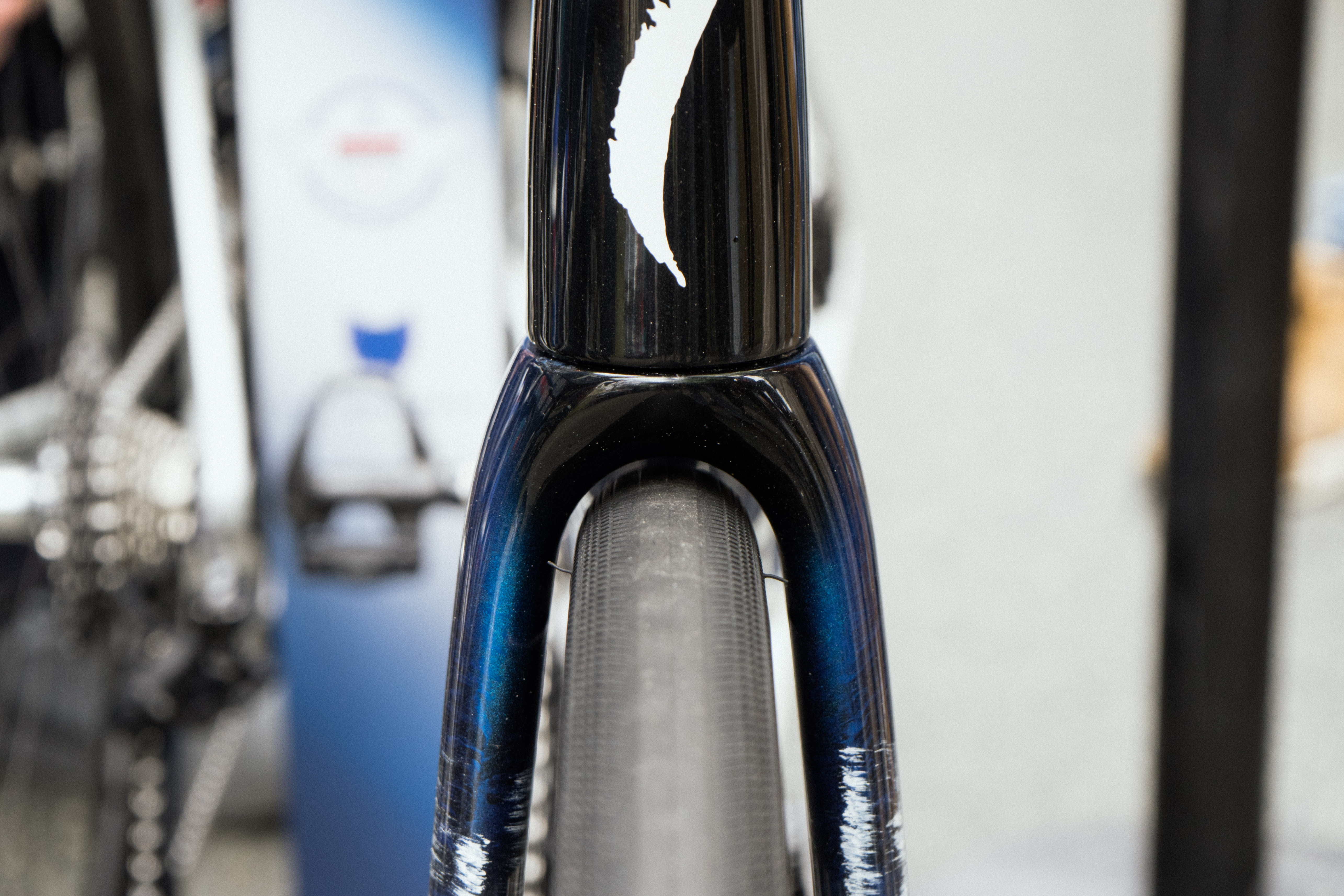New UCI gear rules will restrict SRAM's use of 10t cog, but there could be implications for wider tyres too
SRAM teams no longer able to use 10t sprocket with standard road setups

A UCI memo, first reported by Daniel Benson, suggests that, come August, the UCI will begin trials of gear limits on competition bicycles for road races. Time trials, for now, are exempt, as it appears the UCI is focusing on mass start rider safety.
Cyclingnews first reported on these proposals, along with other safety schemes which have been implemented like the use of yellow cards, back in March of this year, but until now gear limits have been background chatter, despite high-profile support from the likes of Wout van Aert.
The trial rules appear to base the restrictions around a specific maximum number of ‘meters of development’, a numerical figure for how hard a gear is, rather than on a specific gear ratio of chainring X sprocket. The trouble is that the UCI has based its new rule around an increasingly outdated tyre size - 28mm - meaning that modern setups with tyres of 30mm in width or more could technically fall foul of the new regulations.
Furthermore, the new rules will impact SRAM-sponsored riders disproportionately, and will mean the 10-tooth sprocket on their cassettes may have to be mechanically nullified by the mechanics, and the proliferation of wide range 1x setups such as we saw so often at the Spring Classics would also come to an abrupt end.

The gear limit trial rules
Before we dive into the letter of the new laws, an explainer on gear ratios is prudent. The gearing of one’s bicycle isn’t just determined by the number of teeth on the chainrings and rear sprockets, but also influenced by the circumference of the rear wheel-tyre system. The equation is as follows:
Development = drive wheel circumference in metres x (chainring teeth/rear sprocket teeth)
In simple terms, the larger your drive wheel, the further you will travel for a given pedal revolution. Changing wheel size from a 26” wheel to a 700c wheel will make one's gearing harder, as for a set sprocket X chainring combination, you are propelling the bicycle further, thanks to a larger circumference.
The latest race content, interviews, features, reviews and expert buying guides, direct to your inbox!
The trial regulations state:
“Limiting the maximum gear ratio of the chainring and cassette to a distance covered per pedal revolution of 10.46 meters or an equivalent of 54 x 11”
It is the 10.46 development figure that is key to keep in mind here, as by the reading the UCI is simply using a 54 x 11 as a proxy for this specific figure of development. This is what they will enforce on the ground, but anything over 10.46 is still, technically, illegal.
While it is true that a 54 x 11 sprocket combination on a 700c wheel with a 28c tyre would create a development of 10.46m, this is only true for that particular tyre size, which is also becoming relatively narrow by modern standards amid a sea change to riders using tyres which are 30c and beyond.
An stealth ban on larger tyres
While it is true that the UCI will only enforce the chainring and sprocket combination, rather than the gear development, it is technically true that anyone running a standard Shimano groupset with a 54t chainring and an 11t smallest sprocket will fall foul of these trial rules if they run a 30c tyre.
Using online gear ratio calculators, a 30c tyre (what is more or less the norm at the moment in the peloton) with a 54x11 would create a development of 10.52 metres, and the very common 32c size would up that figure to 10.58.
These are extremely marginal differences, but races are won and lost on tiny margins with alarming regularity, so it’s worth running the numbers. Assuming two riders with the same sprocket size and an equal cadence of 100 rpm. The difference between a 28c and a 32c is 0.12m of development, or 12cm per pedal revolution. For a 15-second sprint, or ¼ of a minute, that’s 25 pedal revolutions, meaning 12x25 gets us 300cm, or a difference of 3m.
Running that again with the most extreme legal scenario of a 38c tyre, before riders would fall foul of the maximum allowable wheel-tyre diameter, riders at this size would have an advantage of 30cm for every pedal revolution, or 7.5m over the course of the same sprint.
If the UCI is only going to enforce the sprockets used and not the tyre size there will be a clear advantage for riders using larger tyres, which further compounds our findings from our own lab testing that wider tyres are faster.

A headache for SRAM
All of the above rings true for Shimano groupsets, which tend to operate with a maximum chainring size of 54t and have a smallest sprocket of 11t. This, of course, means that riders like Josh Tarling, famous for running a 62t chainring at races like Roubaix (primarily for gear efficiency and aero reasons than flat speed) would be, to put it bluntly, super illegal. However, providing all Shimano-sponsored riders opt to run ‘normal’ setups, they most likely won’t fall foul of the commissaires, unless they actually turn up to the pits with a device for measuring wheel diameter.
For SRAM-sponsored teams, it’s a different story, thanks to the brand's long-established use of a 10t sprocket. A 54x10 setup as is common, even with a 28c tyre, would create a development of 11.50 metres (or 11.84m with a 38c, if you were curious). Given that all Sram sprockets at WorldTour level utilise this smaller sprocket team mechanics will have to use the rear derailleurs limit screws to effectively create a hard stop on the rear derailleur, denying it access to the illegal sprocket. This is similar to what we saw earlier this season, whereby the Lidl-Trek mechanics modified the SRAM Red XPLR derailleurs to make them 12-speed.
What’s more, 1x setups such as we saw at the Spring Classics, whereby riders would routinely pair a 54t chainring with either a standard or a wide range SRAM cassette, would be illegal. In order to comply with the rules, the riders would have to opt for a 49t maximum chainring size in order to use the full spread of gears.
Looking to the future, Shimano has recently launched a wireless XTR MTB groupset with a 9t smallest sprocket. While we haven’t heard any mention of this porting over to the road, these new UCI rules will certainly give it pause for thought if it is indeed a discussion at the design table.
Cyclingnews has contacted SRAM for comment.

Will joined the Cyclingnews team as a reviews writer in 2022, having previously written for Cyclist, BikeRadar and Advntr. He’s tried his hand at most cycling disciplines, from the standard mix of road, gravel, and mountain bike, to the more unusual like bike polo and tracklocross. He’s made his own bike frames, covered tech news from the biggest races on the planet, and published countless premium galleries thanks to his excellent photographic eye. Also, given he doesn’t ever ride indoors he’s become a real expert on foul-weather riding gear. His collection of bikes is a real smorgasbord, with everything from vintage-style steel tourers through to superlight flat bar hill climb machines.
You must confirm your public display name before commenting
Please logout and then login again, you will then be prompted to enter your display name.
